History
Nigeria@60: The Emergence of Chief Ernest Shonekan as Head of ING
History
Margaret Walker: Trailblazing Poet, Scholar, and Activist
Margaret Walker was born on July 7, 1915, in Birmingham, Alabama was a college student at the age of 15 when she begin writing poetry. She received a BA from Northwestern University in 1935 and an MA from the University of Iowa in 1940. In 1936 she joined the Federal Writers’ Project in Chicago, where she became friends with Richard Wright and joined his South Side Writers Group.
In 1941 Walker became the first African American poet to receive the Yale Younger Poets Prize, for her debut collection For My People (Yale University Press, 1942). She was also the author of the poetry collections This Is My Century: New and Collected Poems (University of Georgia Press, 1989), October Journey (Broadside Press, 1973), and Prophets for a New Day (Broadside Press, 1970).
Walker married Firnist Alexander in 1943, and together they had four children. In 1949 they moved to Mississippi, where she joined the faculty at Jackson State College. She returned to the University of Iowa for her doctoral studies and received a PhD in 1965. The following year, she published her dissertation as a novel, Jubilee (Houghton Mifflin, 1966).
In 1968 Walker founded the Institute for the Study of the History, Life, and Culture of Black People at Jackson State College. As director of the institute, which was later renamed the Margaret Walker Center, she organized the 1971 National Evaluative Conference on Black Studies and the 1973 Phillis Wheatley Poetry Festival.
After Walker retired from teaching in 1979, she published On Being Female, Black, and Free (University of Tennessee Press, 1997), a collection of personal essays, and Richard Wright: Daemonic Genius (Warner Books, 1988), a work of nonfiction informed by her friendship with Wright. Margaret Walker died of cancer on November 30, 1998, in Jackson, Mississippi.
History
Today In History: 40 Years After Shagari’s Government Was Overthrown
Abbas Yushau Yusuf
On the 31st of December 1983, forty years ago today, the military, led by Major General Muhammad Buhari, Nigeria’s former civilian President, overthrew the first presidential system of government.
The Second Republic, led by Late President Shehu Aliyu Usman Shagari, was just three months into its second term.
President Shagari prepared for the day after attending Jumuat prayers at the Obalende Jumuat Mosque, Lagos. He then proceeded to the council chambers of the former State House, Dodan Barracks, to record a New Year’s speech expected to be relayed to Nigerians on January 1, 1984, which was never broadcasted till today.
Former President Shehu Shagari was overthrown while taking a rest at Aguda House, now the official office of the Vice President in Abuja.
The coup recorded only one casualty, Brigadier Ibrahim Bako, who came all the way from Kaduna to arrest former President Shehu Shagari at the State House in Abuja.
As the battle ensued between the coupists and the soldiers still loyal to President Shagari, Brigadier Ibrahim Bako was killed.
During his detention in Lagos, Ex-President only read in the pages of newspapers that he ordered the shooting of Brigadier Bako, which he debunked in his autobiography “Beckoned To Serve.”
The short-lived Second Republic was seen as just a four-year break by the military when they handed over on October 1, 1979.
Despite corruption allegations leveled against Shagari by Buhari’s military administration, Shagari turned out to be one of the few Nigerian leaders who never enriched themselves with public funds.
He and his vice, Late Alex Ekwueme, were cleared by the Justice Uwaifo commission.
Now, it’s forty years since the coup that plunged Nigeria into another fifteen years of military rule.
History
Sarkin Kano Alu Babba(1894-1903)
Aliyu Babba popularly known as Alu was believed to have been born in 1853. He was named after his maternal grandfather Sarkin Musulmi Aliyu Babba. He started his early education under the guidance of his mother Saudatu who taught him the Holy Qur’an. His other teachers were Mallam Babba Na Kofar Kwaru and Malam Mustapha Naibi of Yolawa. He studied fiqh (jurisprudence) and tafsir (commentary of the Holy Qur’an) under the guidance of these scholars. He advanced his studies at Madabo School where he studied Muktasar of Sidi Khalil the most advanced book on jurisprudence. The Madabo School specialized in this subject. He studied nahwu (Arabic grammar) and al-‘Irab (syntax) with Mallam Usman Dan Shamaki.
He was the Waziri and the closest associate of the leader of the Yusufawa, Yusuf Dan Abdullahi. When the later died the Cucanawa skillfully stage-managed the ascension of Aliyu to the leadership of the group. He was the most knowledgeable and charismatic of the surviving sons of Abdullahi Majekarofi. It was also believed that Yusuf recommended him as his successor, because he was a grandson of Sarkin Musulmi Aliyu Babba Dan Muhammad Bello thus making it difficult for Sokoto to attack the Yusufawa. The two contenders to the leadership of the Yusufawa, Sarkin Dawakin Tsakar Gida Abbas and Dan Makwayo Shehu had no option other than to pledge allegience to their younger brother.
Alu triumphantly entered Kano on Wednesday 16th Safar 1312 AH (19th August 1894) after the defeat of Sarkin Kano Tukur, who was forced into exile. Sarkin Musulmi Abdulrahman’s effort to reinstate Tukur failed while Alu consolidated his position as the new Sarkin Kano. There were reprisals and violent suppression of dissidents and criminals as a result of the militarization of the society by the civil war. This necessitated new appointments. The most prominent was Ahmadu, the elder brother of Alu who was appointed Waziri, which was the highest title. He also appointed Mahmud, Kwairanga, Sulaiman, Hamza, Abdussalam as Galadima, Madaki, Alkali, Makama and Sarkin Bai respectively. Ismaila al-Khatib the father of Walin Kano Sulaiman was appointed the Imam. He made innovations in the sarauta by instituting new slave titles the most prominent of which was that of the shatima Shekarau who was placed in charge of the famous weapon known as sango.
Alu was a brave and industrious warrior he invented the sango (explosive), which he used in his military engagements, he was nicknamed maisango. But other historians have suggested that he got this sango from Yoruba areas derived from the Yoruba god of thunder (sango) and that it was imported through Bida therefore it was not Alu’s invention. Nevertheless he used it on his assault against the Tukurawa forces in Kano and on his subsequent enemies whom he fought as the Emir of Kano. Sango terrified horses and horsemen because it was new weapon with explosive sound.
The Damagarawa seriously threatened his authority. They invaded Kano twice in the first instance in 1313 AH (1896) they were heavily defeated but later in 1313 AH (1898) they retaliated and inflicted heavy casualty and defeat on Kano. Eventually Kano was relieved of their nuisance in 1316 (1899) when the French imperialist subjugated them. Alu was also able to withstand Ningi’s aggressiveness, the Ningawa were defeated several times during his reign. The other external threats to his reign were Maradi and Hadejia when they took the advantage of the uneasiness caused by the Kano civil war. While Alu was consolidating his rule, the British were gradually conquering the Emirates of the Sokoto Caliphate. The first Emirates to be conquered were Ilorin and Bida in 1897. He was aware of these developments and British intentions and activities in various parts that later became Northern Nigeria. He wrote a series of letters to the Sarkin Musulmi and the Waziri on the activities of the Nasara (Christians) as the British were known to Muslims. He canvassed for hijra (emigration) that they should leave the country all of them.
In 1312 AH (29th January 1903), the British imperial expeditionary force left Zaria for Kano. They crushed the brave oppositions mounted by various towns and villages along their way to Kano with all brutality and barbarism. For example, they burnt the bodies of Sarkin Bebeji Jibril and seven others after murdering them to show example to the resistant ‘natives’. When they reached Kano on 3rd February 1903, an unorganized but courageous resistance confronted them. Alu had gone to Sokoto but he was aware of the impending British imperialist invasion. The news of the conquest of Kano was brought to him by one Inuwa son of Ma’aji Yahaya and brother of Rahmatu who attempted to resist the invasion by setting the armory on fire. He was angry with the messenger and he ordered him to be imprisoned but was persuaded by the Waziri to release him. The sallama arrived later the next day.
It has been suggested that Alu opted for Hijra (emigration) to avoid bloodshed. His exodus was to east where he intended to perform the Hajj (Holy pilgrimage to Makkah). Sallama Jatau who was one of the leaders of the Kano forces that fought against the British invaders met him at Birnin Goga and informed him of the conquest of Kano. He also brought Kubura Alu’s senior wife, the sallama later alleged that it was Kubura who made Alu to flee and he regretted that he had he known he would have killed her. Alu ordered his younger brother Galadima Mahmud to return his younger wife the daughter of the Sarkin Musulmi to her father. The Galadima was accompanied by Alkalin Kano Sulaiman and the Magaji Gari Keffi. In another version, it was reported that shamaki Harisu led the contingent to Sokoto. Probably Harisu knew the route better than the Sarki’s brother. They were perhaps the only people who knew that the Sarki was going to emigrate. It has also been reported that the Sarki consulted two other individuals Maikano Buzu and Alhaji Baba who according to the story “offered to guide the Emir to Istanbul [Turkey]”.
Alu left his forces at night. According to one of his slaves, Shehu Dan Jakadan Durmin Shura, three of them informed the sallama that the Sarki had fled. The sallama directed his horse holder to:
Go now and seek Dan Rimi, and at dawn tomorrow, just after first light, bid him to cause the gong to be sounded as if the Emir were still with us, and you, Usman Mabude [the man in charge of the supplies of gunpowder], see to it that the signal gun for saddling-up is fired off also’. Then Salama went off to the Emir’s lodgings and called upon the Majidadi to say where the Emir was. He said the Emir had fled in the night.
In the morning the sallama addressed the warriors at Birnin Goga and informed them that the Emir had fled and that whoever wanted to rejoin his family in Kano should follow him and he told the Waziri, who was the next in hierarchy of the sarauta system after the Sarki, to take command but the later and insisted that the sallama should lead and that he would follow with the other Hakimai. The Sallama and the Dan Rimi were the greatest of the Sarki’s slaves, according to Maitama Dan Makaman Dan Rimi who was an eyewitness “whenever the Emir rode with his army he was in front and then Dan Rimi and Sallama came behind. After them came the District Chiefs”. The army moved and the Sallama “ordered the drums to beat with the Emir’s drum roll so that it seemed still as if the Emir was there”. When the people came forth thinking that the Sarki was present, the Sallama informed them again that: “The Emir has fled. What will you do? Whoever wishes to do so can go to Sokoto or anywhere else that he may desire.’ And the people answered and said. ‘We are going to Kano. Wherever you go, we will follow’”.
Waziri Ahmadu and other prominent chiefs were martyred by the British invaders at Kotorkorshi and he became known as Mai Shahada (the Martyr). At that encounter when they met the British invaders Sallama told the Waziri after the first scouts have been killed “what should we do?” The Waziri replied: “What should we do? Why?” He had earlier made a similar observation and the Waziri had replied him: “Haba Salama! There is nothing for us to do but fight them. If we do not win today then we go under. Shall we postpone what we have begun?” And the Dan Rimi also agreed with the Waziri. Shehu Dan Jakadan Durmin Shura reported the encounter in which prominent Kano leaders were martyred:
Thereupon the whole force charged towards the soldiers on other side of the streambed but before we got there the soldiers started shooting, and Allah denied us good fortune. Most of our leaders, amongst them the Waziri, Salama, Mabudi and Yamu, the son of the Waziri all died during this charge.
Alu who was on his way to the East with letters of introduction from the Sokoto authorities addressed to Sarkin Gobir at Tchibiri asking him to grant Alu “safe passage”. Ironically the Sarkin Gobir had never made peace with the Caliphate therefore it was not surprising that he detained Alu and informed the French who notified the British in Sokoto and then handed him over to them “a week after the fall of Sokoto”. Nagwamatse reported Alu’s capture that he saw him “in a small procession in the market through the Kware gate”. According to the story he “was led by a British officer, and in the middle, unbound but riding on a mare with no bridle, and haltered to a trooper’s horse was the Emir Aliyu of Kano”. One of the British officers depicted Sarkin Kano after his capture and when he was paraded in Sokoto as “a silent, dejected tragic figure no doubt wandering what was going to happen next”.
The British invaders decided to banish Alu to a distant location after his capture but it took them a year and two months before they decided to settle him at Yola, Adamawa Emirate and there is no available information on where he was kept for over year but it has been suggested that he “was perhaps kept at some British camps and forts including Wushishi where” Sarkin Zazzau Kwasau was also detained. Both Alu and Kwasau were exiled to Yola, which was under the Emirship of unpopular Bobbo Ahmadu. Sarkin Kano Alu and about 300 of his followers gained the sympathy of the populace who regarded him as hero for resisting the British. He lived like a second Emir. According to one narration when the Mosque was a state of disrepair he spoke to the Emir who was unable to organize volunteers and Alu quickly ordered his followers many of whom were big men and they repaired the Mosque.
The popularity of the exiled Sarkin Kano, his sympathy for those considered dissidents and his call for looking out for the promised Mahdi attracted the attention of the colonial authorities, including the High Commissioner Lugard who considered Alu’s correspondences as intrigues, and even warned that he will exile him to a non-Muslim territory.
Both the Resident and the Emir of Adamawa were not comfortable with his continued presence in Yola and in September 1904 he was moved from Yola to Lokoja on the Niger-Benue confluence. While he was leaving Yola and bidding farewell he was reported to have told Lamido Bobbo Ahmadu “until you come”. Five years later the Lamido was also exiled to Lokoja and then to Zaria and he lived for seven years in exile until his son Lamido Abba pleaded with the British and he was returned to Adamawa where he died in Yola in 1916.
At Lokoja the exiled Sarkin Kano Alu was virtually kept under house arrest and he was denied the freedom to see other exiled Emirs. Even his interaction was restricted for example Said bin Hayat the leader of the Mahdiyya was not allowed to visit him despite the fact that he was allowed to meet other exiled Emirs. Alu was thus considered a threat to the British colonial administration. But they did not prevent Sarkin Tijaniyya from interacting with him perhaps they did not consider the
brotherhood as dangerous to their domination as the Mahdiyya. This was despite the fact that Bashir had fought at Burmi along with Sarkin Musulmi Attahiru. Aminu, the son of Alu, married Zainabu the only daughter of Bashir. Both Alu and Bashir were maternal descendants of Sarkin Musulmi Mohammad Bello. Alu also gave his daughter in marriage to the Maigari of Lokoja (Chief of Lokoja). He died in Lokoja in 1926.
May his soul rest in peace…ameen
-

 Features3 years ago
Features3 years agoHow I Became A Multimillionaire In Nigeria – Hadiza Gabon
-
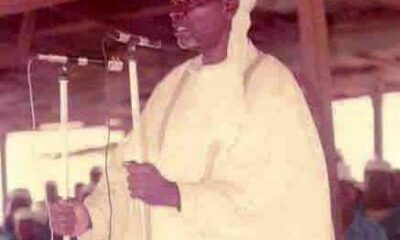
 History3 years ago
History3 years agoSheikh Adam Abdullahi Al-Ilory (1917-1992):Nigeria’s Islamic Scholar Who Wrote Over 100 Books And Journals
-

 Opinion2 years ago
Opinion2 years agoOn The Kano Flyovers And Public Perception
-
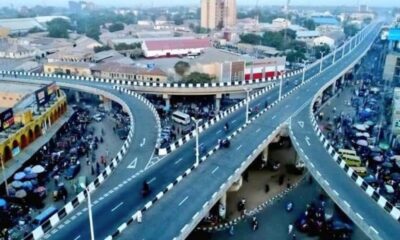
 Opinion3 years ago
Opinion3 years agoKano As future Headquarters Of Poverty In Nigeria
-
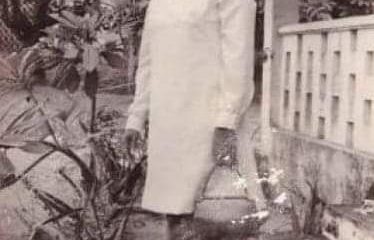
 History3 years ago
History3 years agoThe Origin Of “Mammy Market” In Army Barracks (Mammy Ochefu)
-
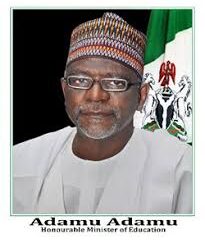
 News2 years ago
News2 years agoFederal University Of Technology Babura To Commence Academic Activities September
-
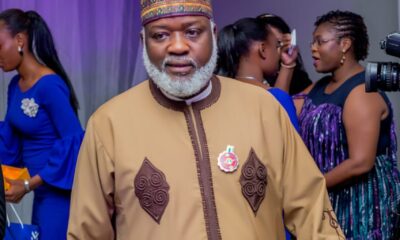
 Opinion2 years ago
Opinion2 years agoMy First Encounter with Nasiru Gawuna, the Humble Deputy Governor
-
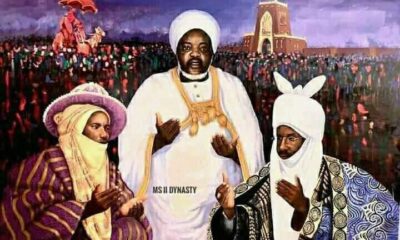
 Opinion3 years ago
Opinion3 years agoKhalifa Muhammadu Sanusi II, A Phoenix Rises